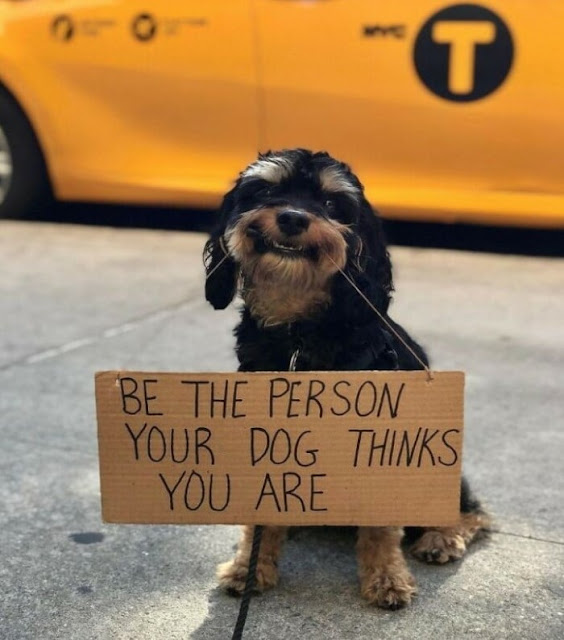Meet Max, the lovable Labrador retriever who has a paw-some personality and a wagging tail full of wisdom when it comes to how humans should interact with dogs. With his charming demeanor and boundless enthusiasm, Max is here to share some tips on the best ways to treat our furry friends.

Respect Personal Space: Just like humans, dogs appreciate having their own space. Before approaching a dog, especially one you don’t know, it’s essential to give them the chance to sniff and assess you. Avoid sudden movements or reaching out to pet them without their consent, as this can startle or frighten them.

Use Positive Reinforcement: Dogs respond best to positive reinforcement, such as treats, praise, and affection, when they exhibit good behavior. Rewarding your dog for following commands or displaying desired behavior helps reinforce those actions and strengthens the bond between you.

Establish Clear Boundaries: Consistency is key when it comes to setting boundaries for your dog. Establishing rules and boundaries from the start helps your dog understand what is expected of them and reduces confusion. Be firm but fair in enforcing these boundaries, and always use positive reinforcement to encourage compliance.

Communicate Effectively: Dogs rely heavily on body language and vocal cues to understand human communication. Use clear, consistent commands and gestures to convey your expectations to your dog. Speak in a calm, reassuring tone to help your dog feel safe and secure in their environment.

Be Patient and Understanding: Just like humans, dogs have their own personalities and quirks. It’s essential to be patient and understanding with your dog, especially during training or when introducing them to new experiences. Avoid punishment or scolding, as this can damage trust and hinder progress.

Provide Proper Care and Attention: Dogs thrive on love and attention from their human companions. Make sure to provide your dog with regular exercise, mental stimulation, and quality time together. Additionally, ensure they have access to fresh water, nutritious food, and regular veterinary care to keep them healthy and happy.

Respect Their Needs and Preferences: Every dog is unique, with its own likes, dislikes, and comfort levels. Pay attention to your dog’s body language and signals to understand their needs and preferences better. Respect their boundaries andaoid forcing them into situations that make them uncomfortable.

By following these simple tips, you can ensure that your interactions with dogs are positive, rewarding, and enjoyable for both you and your furry friend. Remember, treating dogs with kindness, respect, and understanding is the key to building a strong and lasting bond based on trust and mutual affection.



